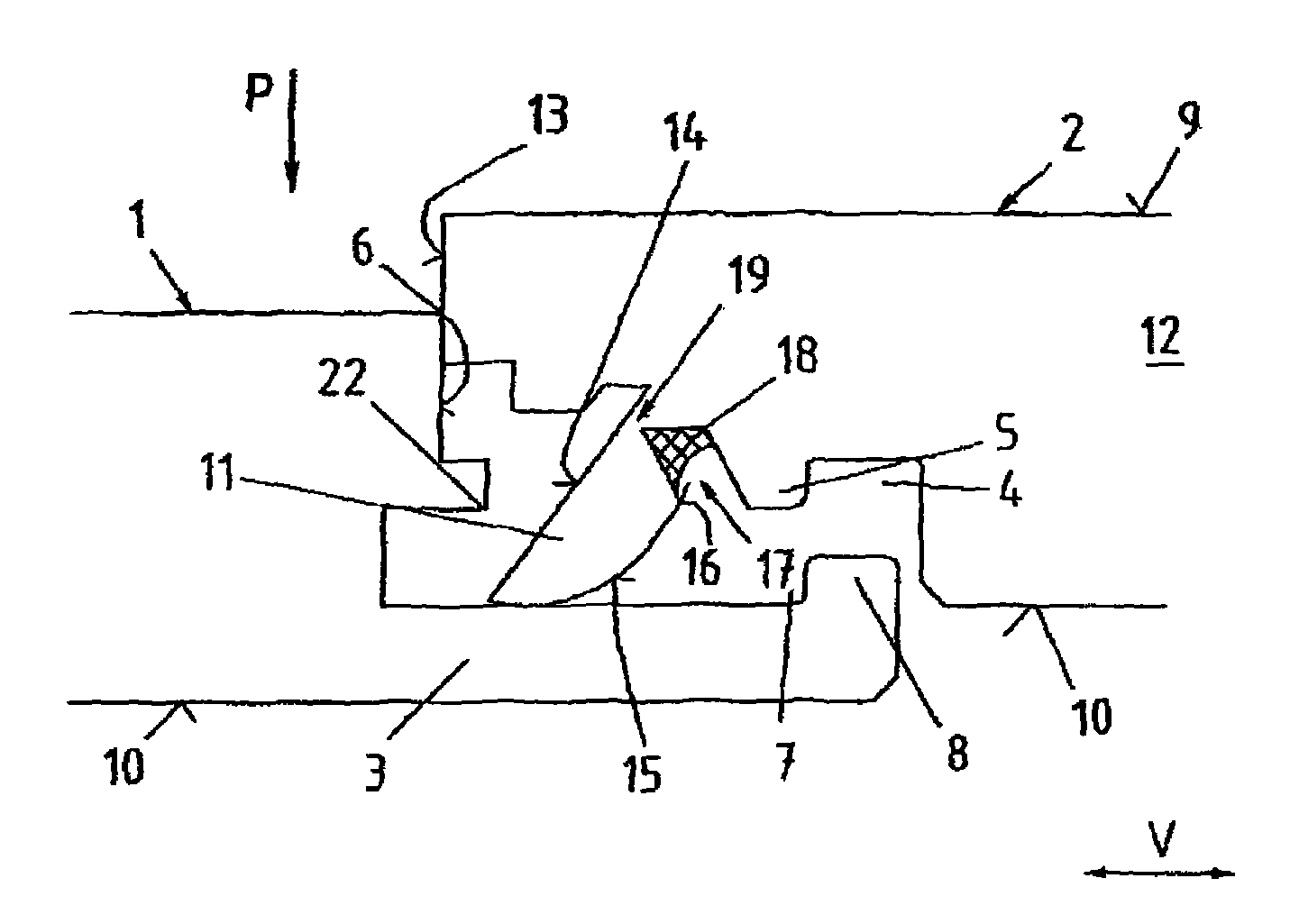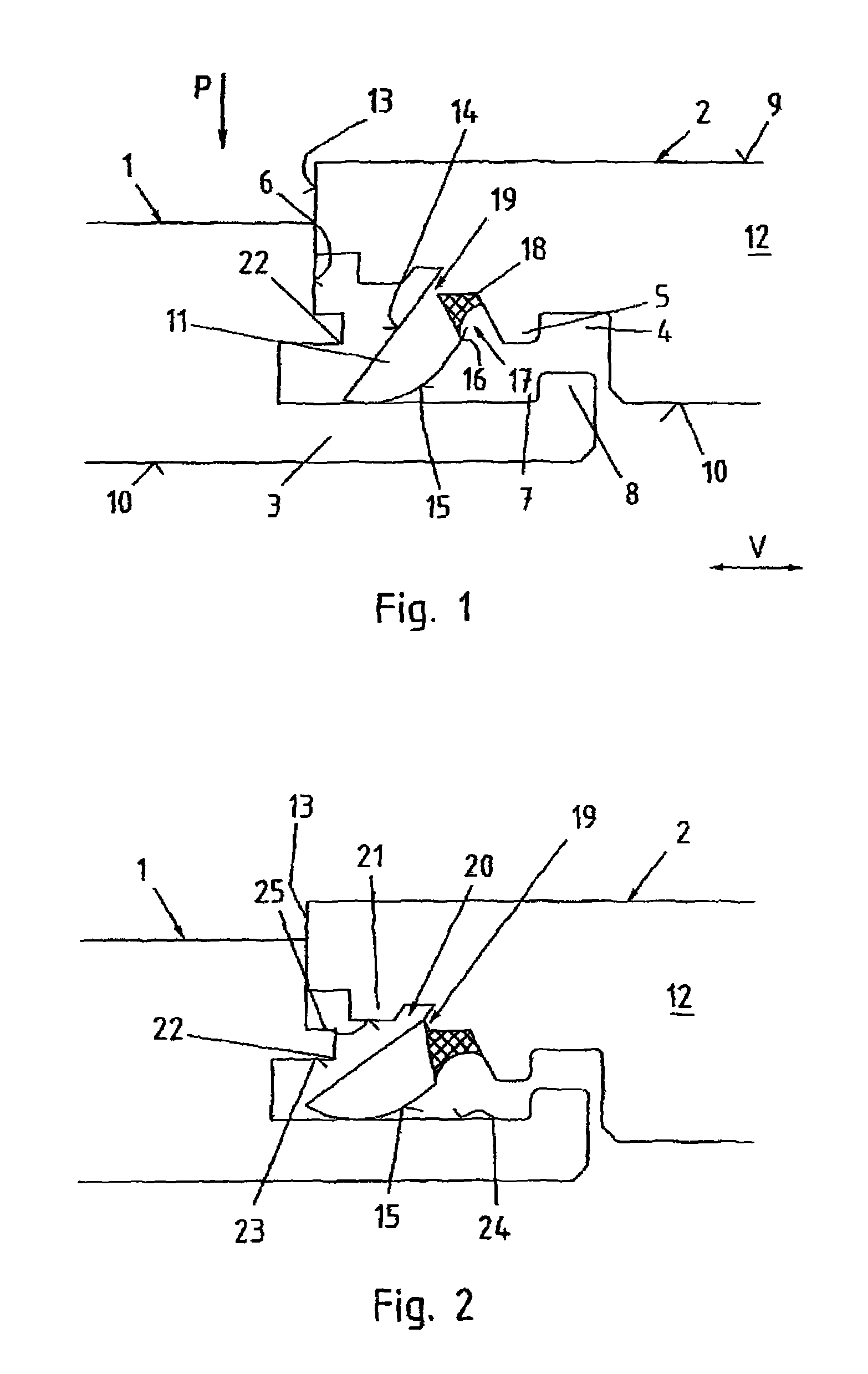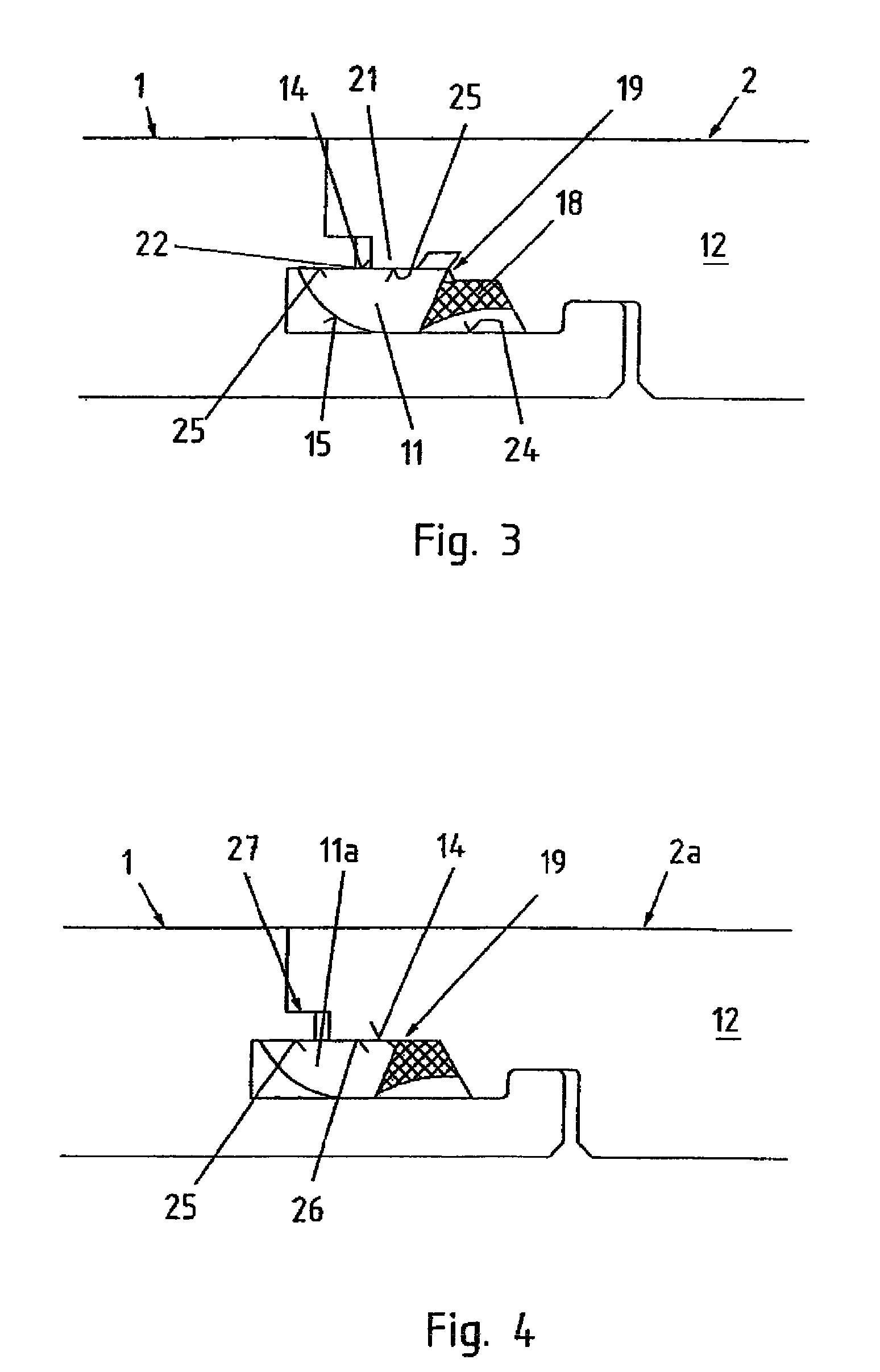Covering from mechanically interconnectable elements
a technology of mechanical interconnection and interconnection elements, which is applied in the direction of sheet joining, building components, fastening means, etc., can solve the problem of posing the risk of damage to the panel, and achieve the effect of locking with little and creating easily
- Summary
- Abstract
- Description
- Claims
- Application Information
AI Technical Summary
Benefits of technology
Problems solved by technology
Method used
Image
Examples
Embodiment Construction
[0037]FIG. 1 shows a cross section through two elements 1, 2 in form of panels. This can be a head side cross section of the elements 1, 2. The elements 1, 2 are configured identical, so that the elements 1, 2 can be assembled to a floor covering.
[0038]FIG. 1 shows two neighboring elements 1, 2 before their locking. The representation shows a first element 1 in the image plane left and in the image plane right a second element 2, which is intended to be joined with the first element 1. The first element 1 has a locking rail 3 and the second element 2 a one sided coupling bulge 5 which is oriented downwards. The locking rail 3 of the first element 1 projects over a head side 6. The element 2 is arranged relative to the element 1, so that when lowering in the direction of the arrow P the coupling bulge 5 of the second panel engages in a coupling channel 7 of the locking rail 3 and the coupling channel 4 of the second element 2 engages with the coupling bulge 8 of the locking rail 3 of...
PUM
| Property | Measurement | Unit |
|---|---|---|
| Structure | aaaaa | aaaaa |
| Tensile properties | aaaaa | aaaaa |
| Elasticity | aaaaa | aaaaa |
Abstract
Description
Claims
Application Information
 Login to View More
Login to View More - R&D
- Intellectual Property
- Life Sciences
- Materials
- Tech Scout
- Unparalleled Data Quality
- Higher Quality Content
- 60% Fewer Hallucinations
Browse by: Latest US Patents, China's latest patents, Technical Efficacy Thesaurus, Application Domain, Technology Topic, Popular Technical Reports.
© 2025 PatSnap. All rights reserved.Legal|Privacy policy|Modern Slavery Act Transparency Statement|Sitemap|About US| Contact US: help@patsnap.com



